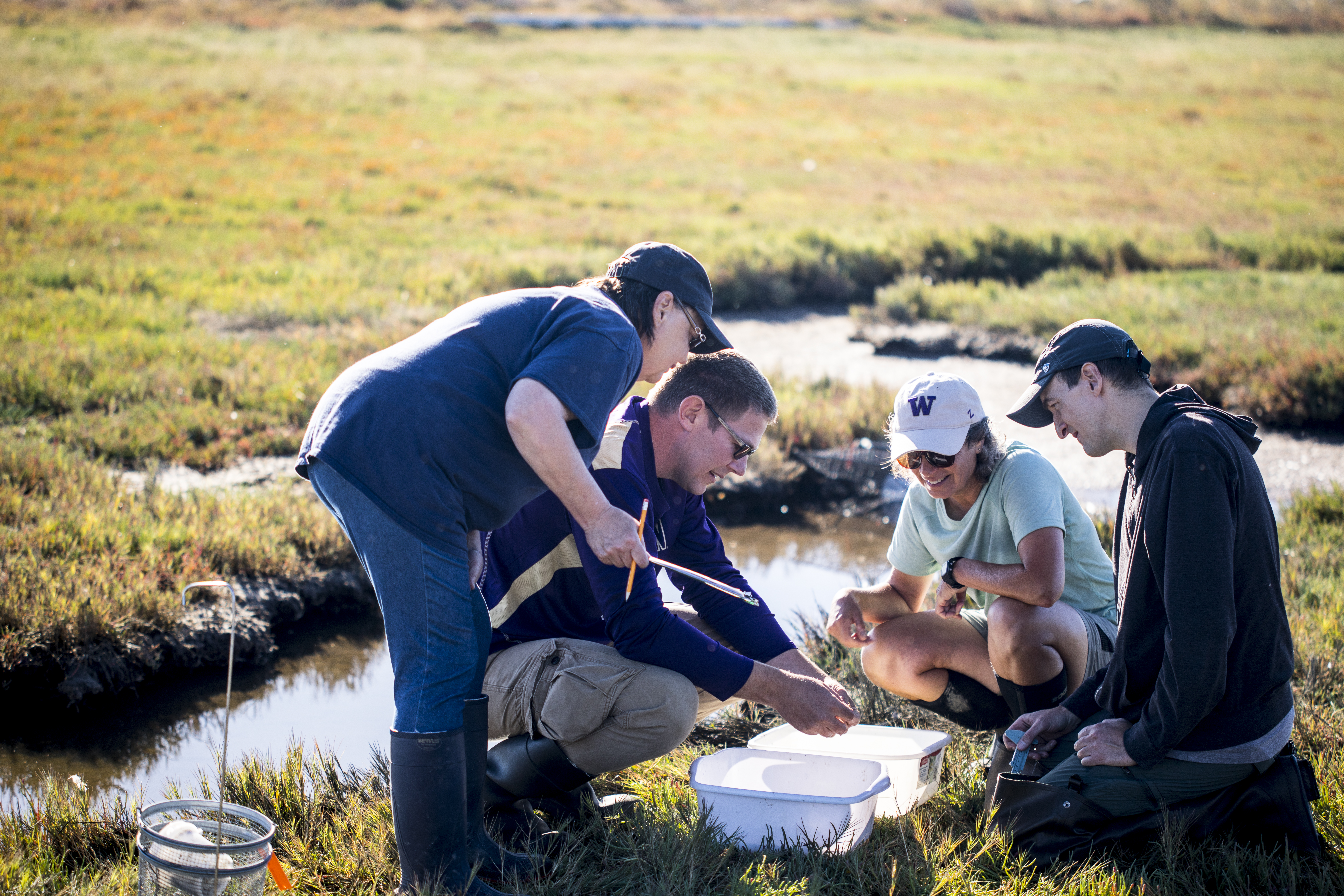Engaging citizen science volunteers to protect the Salish Sea from invasive European Green Crab
The European green crab is listed by the International Union for Conservation of Nature (IUCN) as one of the world’s 100 most damaging invasive species. European green crabs can devastate aquatic ecosystems, displacing native species by aggressive predation, disturbing native habitats by uprooting seagrass, and altering food webs. Washington Sea Grant’s Crab Team was launched in 2015 in response to a Washington Department of Fish & Wildlife mandate to monitor for European green crabs along inland Washington shorelines after European green crabs were found in Sooke Basin, just west of Victoria B.C. in 2012. Crab Team trains and mobilizes volunteers and partners to survey sites with two main goals:
- Detect European green crabs at the earliest possible stage of invasion to increase the ability to control population and reduce green crab impacts.
- Build a long-term dataset on green crabs and other mobile animals living in soft sediment habitats to track green crab impacts and improve the understanding of Washington’s pocket estuaries and salt marshes.
By training and supporting citizen science volunteers, the Washington Sea Grant Crab Team can monitor a much larger area than would otherwise be possible. At the same time, they are learning more about the community of animals that lives in salt marshes and pocket estuaries and how to better protect them. Many of these animals are part of the food chain that supports salmon and sea birds.
What worked:
- Volunteers were successfully trained to recognize and detect green crabs.
- Crab Team monitoring resulted in removal of 185 European green crabs from Puget Sound, including in the Dungeness Spit Wildlife Refuge.
- A total of 766 site surveys have been conducted at 56 sites throughout Puget Sound with a total of 10,649 hours contributed by 253 citizen science volunteers and partners.
- The program has expanded from 30 volunteers and 7 monitoring sites in 2015 to 253 volunteers and 56 sites in 2019.
- Early monitoring by volunteers resulted in the early detection of green crabs at four sites in Washington.
- An online and smartphone app reporting system is in place, making reporting of a European green crab sighting quick and easy.
Benefits:
- Early detection of European green crab allows for management actions to prevent full-scale invasion.
- Shellfish and Dungeness crab industries are protected from predation by European green crab invasion.
- Sensitive eelgrass habitats are protected from grazing damage by European green crab.
- Crab Team protocols are being adopted in Canadian Salish Sea and by the Makah Tribe on the outer coast of Washington, ensuring comparable data and early detection.
- Collaboration between government agencies, tribes, citizen science volunteers and landowners ensures vulnerable sites are monitored regularly.
- Building a long-term dataset on pocket estuaries will serve to document impacts if European green crab populations spread.
Location:
- Congressional District: 1, 2, 6, 7, 9, 10
- Legislative District: 10, 21, 23, 24, 26, 27, 30, 32, 33, 34, 35, 36, 38, 40, 42
- WRIA: 1, 2, 3, 6, 19, 18, 17, 16, 15, 13, 12
- County: Clallam, Jefferson, Kitsap, Whatcom, Skagit, Island, San Juan, Mason, Thurston, Pierce, King
Partnerships:
- University of Washington
- Washington Department of Fish and Wildlife
- Washington Department of Natural Resources
- Washington Department of Ecology
- Jamestown S’Klallam Tribe
- Lower Elwha Klallam Tribe
- Makah Tribe
- Port Gamble S’Klallam Tribe
- Samish Indian Nation
- Stillaguamish Tribe
- Suquamish Tribe
- Swinomish Indian Tribal Community
- USFWS
- Department of Fisheries and Oceans Canada
Project Funding:
- EPA National Estuary Program
- Washington Department of Fish and Wildlife
- State of Washington (proviso to University of Washington)

